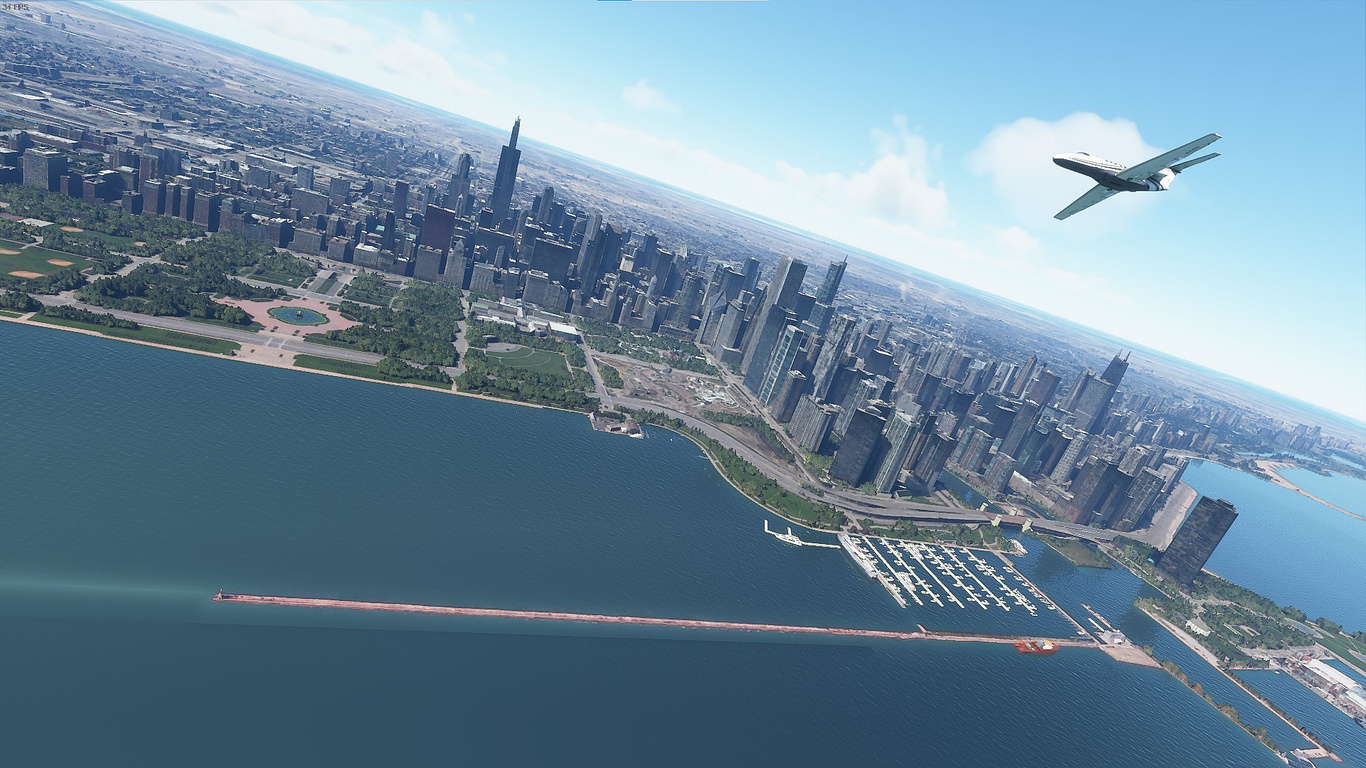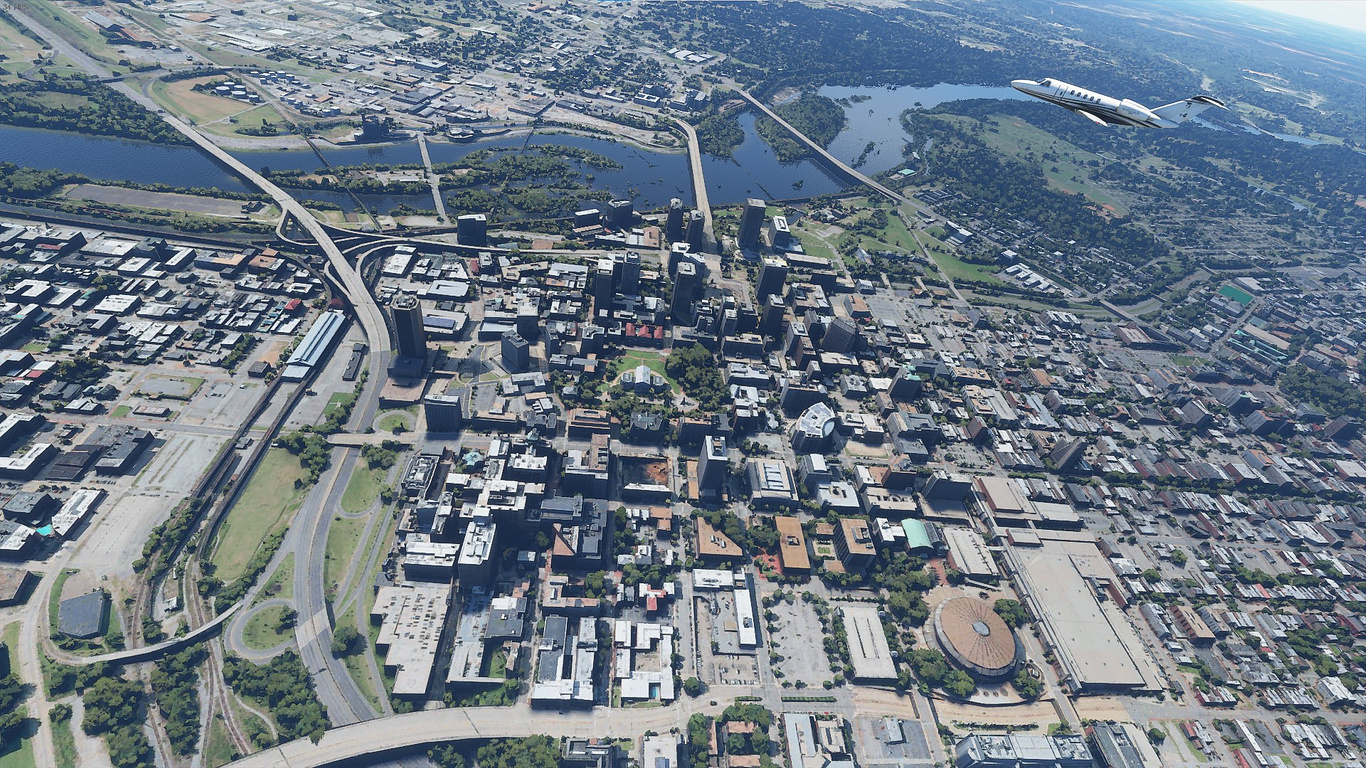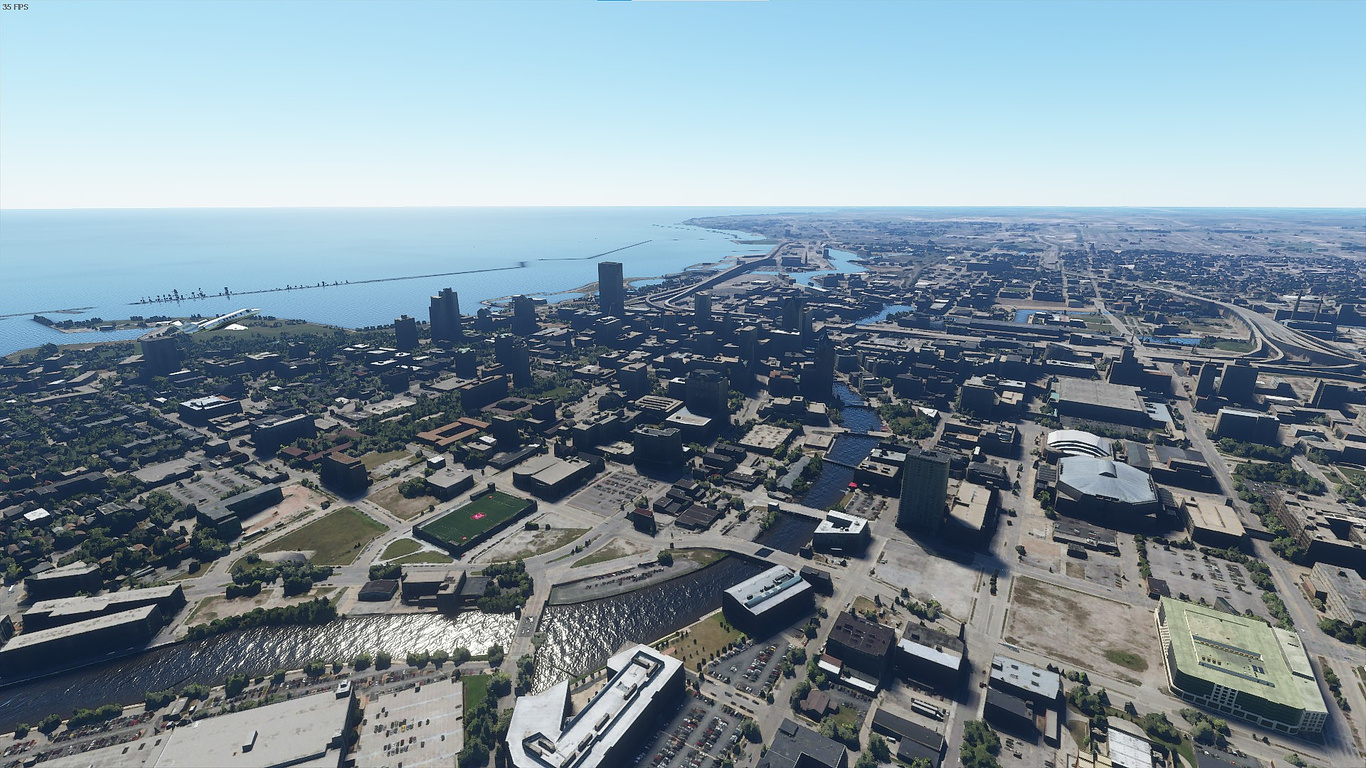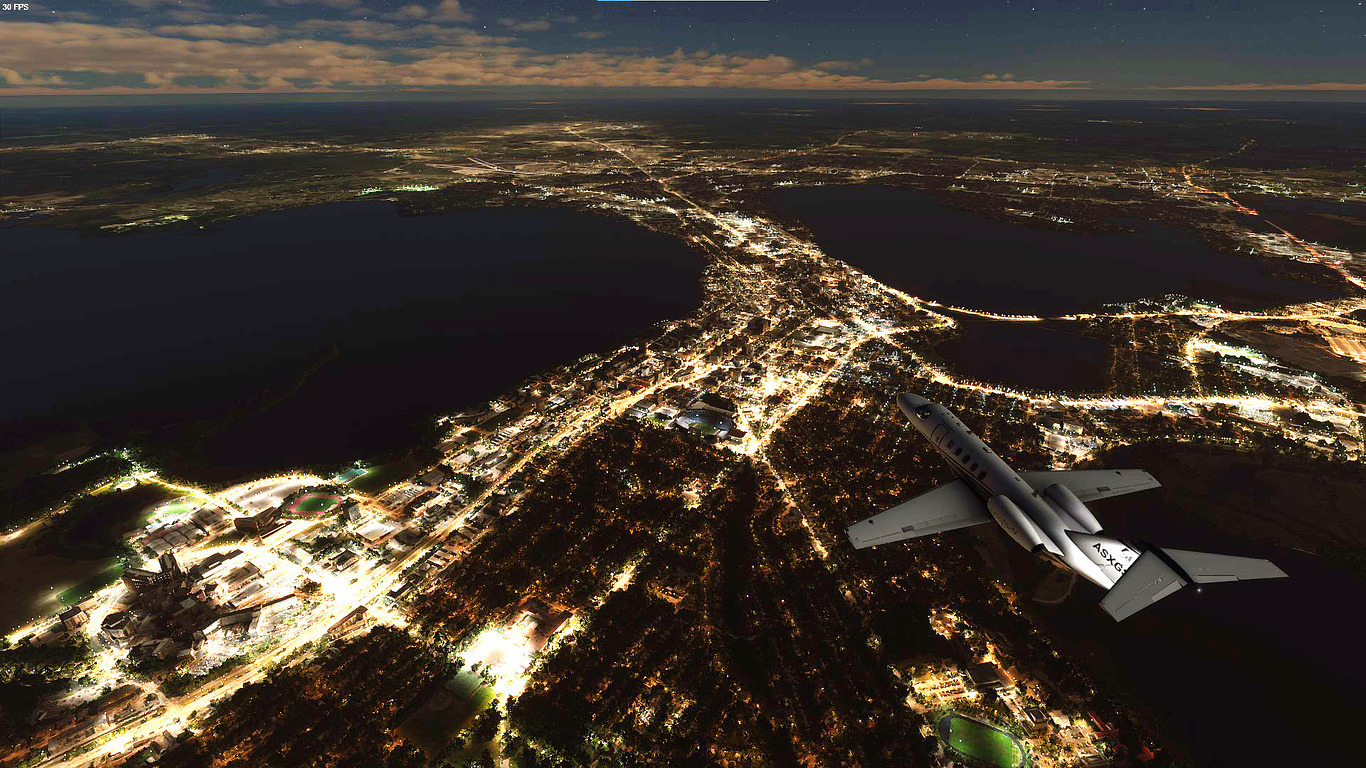Inspiration
Come Fly With Me: Three Things a Game Can Teach Architects About AI
Number 1: Everything looks wonderful from 10,000 feet. But you probably knew that already.
Photo credit: Microsoft Flight Simulator; screenshot by the author
Photo credit: Microsoft Flight Simulator; screenshot by the author
For many industries, the pandemic forced us to react to different challenges, and a large part of the adaptation has been driven by new technologies. Kahler Slater has been researching and implementing automation tools to augment our workflow, including integrating the Holy Grail of automation: Artificial Intelligence. In leading our firm’s design technologies research, I’ve been looking high and low for a hands-on example of what AI can do for architects, but so much has been theoretical up to this point. However, I finally found the perfect example: Microsoft’s Flight Simulator.
As an architect with a passion for archvis and design technologies, experiencing this game has been nothing short of a revelation.
As an architect with a passion for archvis and design technologies, experiencing this game has been nothing short of a revelation.
Developed by Microsoft in partnership with Asobo Studio and Blackshark.AI, the game’s claim to fame is that you can fly anywhere. This isn’t just marketing. You can actually fly anywhere. Weighing in at a whopping two petabytes of data (that’s two million gigabytes), they have modelled a digital twin of the entire planet. This even includes the weather (just ask me about my flight through Hurricane Laura), made possible thanks, in very large part, to their purpose-built artificial intelligence. For any architects who decide to experience this simulation, these are what I would like them to take away from this (very sophisticated) precedent.
Featuring Kahler Slater’s newest office in Chicago! Also, literally everything else.
Photo credit: Microsoft Flight Simulator; screenshot by the author
Photo credit: Microsoft Flight Simulator; screenshot by the author
1. It’s the Little Things That Make a Big Difference...
The first thing you notice is that the game is gorgeous. Everything looks great from 10,000 feet; anyone who is smooshed into an economy class seat can tell you they still sit in awe of what they see from their tiny window. But the development team absolutely nailed it. Still images look great, but they don’t do justice to how it looks in motion. Part of this is due to the love and craft the developers put into the game, but it’s made possible through the AI working hard behind the scenes to render everything the developers didn’t have time to handcraft.
In architectural visualization, it’s the little things that make an image feel real, like you’re actually there. As someone who has spent hours trying to get entourage to look juuuuuuust right, it is humbling to look out over a fully rendered world, lush with vegetation and moving vehicles. AI-augmented rendering techniques are a game changer when it comes to what is possible in computer renderings.
The James River looks highly detailed from this angle as does the rest of Richmond, Virginia. Kahler Slater’s office in Shockoe Slip can be seen near the middle of the image.
Photo credit: Microsoft Flight Simulator; screenshot by the author
Photo credit: Microsoft Flight Simulator; screenshot by the author
2. ...But Don’t Sweat the Small Stuff
There will be mistakes and oversights. Players have already spied several strange errors generated by the algorithm. Even in my short time with the game, I’ve noticed some glitches. Simply put, if you automate the placement of trees, you’re going to sometimes see trees in weird areas. For example, Milwaukee’s breakwater (pictured below) is growing several oaks in the simulation because the AI thought the satellite imagery looks like a park. However, the trees on the Summerfest grounds nearby look exactly like they do in real life. The same is true of cars modelled in parking lots, the extents of bodies of water, and every single streetlight on the planet.
There will be mistakes and oversights. Players have already spied several strange errors generated by the algorithm. Even in my short time with the game, I’ve noticed some glitches. Simply put, if you automate the placement of trees, you’re going to sometimes see trees in weird areas. For example, Milwaukee’s breakwater (pictured below) is growing several oaks in the simulation because the AI thought the satellite imagery looks like a park. However, the trees on the Summerfest grounds nearby look exactly like they do in real life. The same is true of cars modelled in parking lots, the extents of bodies of water, and every single streetlight on the planet.
The AI gets it right 99% of the time, which frees up the developers to focus all of their time where it matters most: planes, airports (which is what most of the players will be spending their time looking at), and managing the entire apparatus they are built upon. If you adopt an automated process, you can’t stress the small errors you’ll find. You’ll already be moving faster and modeling more than you would ever be able to without it.
Milwaukee looks great from this angle - but it’s missing several of its newest, best-looking additions. However, as part of the Milwaukee community for 111 years, Kahler Slater’s office is visible here along Wisconsin Avenue.
Photo credit: Microsoft Flight Simulator; screenshot by the author
Photo credit: Microsoft Flight Simulator; screenshot by the author
3. Data Management (two million gigs worth)
Milwaukee’s skyline has gone through a lot of changes in the last few years: a new arena, several new glassy towers (including Kahler Slater-designed additions such as 833 E Michigan and the BMO Tower), and a whole cadre of 5-story apartment buildings. I was excited to see these represented in this virtual simulacrum, but to no avail. They don’t show up. The Milwaukee of MFS is circa 2016. This is likely because these developments were completed after the game finished its own development. However, it’s entirely possible that future updates will include these buildings. Not because the Bordeaux-based development team will have visited the city and realized their omissions, but simply because the data will be updated. When the new map is pushed out to the program, the ENTIRE PLANET will update accordingly. This is an unbelievable amount of data that is being managed by the algorithm, automatically. If AI can handle the world, it can definitely handle your Excel file.
Milwaukee’s skyline has gone through a lot of changes in the last few years: a new arena, several new glassy towers (including Kahler Slater-designed additions such as 833 E Michigan and the BMO Tower), and a whole cadre of 5-story apartment buildings. I was excited to see these represented in this virtual simulacrum, but to no avail. They don’t show up. The Milwaukee of MFS is circa 2016. This is likely because these developments were completed after the game finished its own development. However, it’s entirely possible that future updates will include these buildings. Not because the Bordeaux-based development team will have visited the city and realized their omissions, but simply because the data will be updated. When the new map is pushed out to the program, the ENTIRE PLANET will update accordingly. This is an unbelievable amount of data that is being managed by the algorithm, automatically. If AI can handle the world, it can definitely handle your Excel file.
Finally, the Isthmus of Madison (Kahler Slater’s Willy Street office included), looking amazing at dusk.
Photo credit: Microsoft Flight Simulator; screenshot by the author
Photo credit: Microsoft Flight Simulator; screenshot by the author
Bonus: This Looks Amazing! When Can I Get AI On My Projects?
What you should be aware of when you apply AI to your projects, is that simplicity is complicated. It takes a lot of effort to make something this big work this effortlessly. And a lot of time. As Milwaukee’s missing skyline can attest, development by several teams has been ongoing since 2016. While you likely won't be modelling the entire planet, applying automation to your workflow can still take a substantial investment. But if you invest and apply automation tools in the correct places, it’s completely worth it. The world is at your fingertips.
Now if you'll excuse me, I'm going to go see how many of my real-world projects made it in to the game. Chances are, yours are in there too. Get flying and see for yourself!
Now if you'll excuse me, I'm going to go see how many of my real-world projects made it in to the game. Chances are, yours are in there too. Get flying and see for yourself!
You must be logged in to post a comment. Login here.
About this article
An architect plays the new Microsoft Flight Simulator, and finds inspiration in the simulation.
visibility80
favorite_border0
mode_comment0





